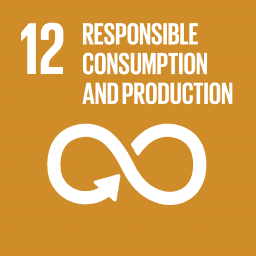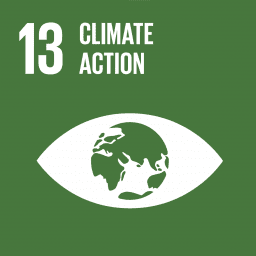Boutèy – Crushing climate change not wine bottles.
Company Summary:
Boutèy is a newly established bottle strategy being implemented in the British Columbia wine sector. Boutèy is on a mission to reduce the amount of virgin wine bottles being made. We curate glass wine bottles and prepare them for reuse in the wine industry. Each bottle saved and reintroduced into the system 5 times will reduce its eco-footprint by 30%.
Executive Summary:
A solution for wine bottle reuse in the Canadian Wine Sector.
In British Columbia, Canada 18+ million bottles of wine are produced each year. This excludes the import market. There is a glass shortage globally. Today, wine bottles are single use items, downcycled and sold to end markets to be manufactured into new goods. Of the 275+ grape wineries & 929 individual vineyards, 84% are located in the Okanagan Valley which is 200KM in length. If only 0.05% of wine bottles were reused each year it would eliminate 170,000 Kg of C02 from being produced. A virgin bottle requires 650g of energy to produce it. To rewash that same bottle only requires 6g of energy.
SDG’S (Sustainable Development Goal):


Reason Why/Motivation/Background:
I have a passion for wine, it’s history and stories contained in each bottle. As a certified wine professional, I wanted to contribute to offering a solution to an age old problem. The glass shortage has been an ongoing crisis for wine makers around the world. The wine sector is very vulnerable to climate change. I want to be part of the solution to a complex problem that benefits wine producers and the environment at the same time.
The opportunity to affect real change for good has inspired my mission to reduce the number of virgin bottles being manufactured.
Project Description:
We curate glass wine bottles and prepare them for reuse in the wine sector.
Benefits/Achievements:
Wine bottles are consumers desired form of packaging. The majority of wine being produced around the world today is packaged in glass bottles. Glass bottles are strong, do not allow air to get into the wine and do not taint the flavors. To create a virgin bottle requires tremendous amounts of energy. Every tonne of recycled glass saves over a tonne of raw materials (1300 pounds of sand, 410 pounds of soda ash and 380 pounds of limestone). A wine bottle can be used a minimum of 8 -10 times. Reuse this same bottle instead of recycling it and you save 5 tonnes of raw materials and reduce its carbon footprint by 30%.
Every day we discard millions of bottles with inherent value, simply because it is not wanted. The problem is not with the bottle, it has inherent value. The problem is there is no solution for the problem as it exists today.
Lessons Learned:
There are several barriers that exist to implementing a system that utilizes bottles in their found state. Building trust and relationships with wineries is fundamental for success. Offering a solution with a small benefit versus one that solves multiple pinch points is required. Some of the identified barriers include:
- Curating Bottles ~ Potential solutions include partnering with hotels, restaurants, wineries to collect bottle supply.
- Manpower ~ The process is labor intensive. Accessing funding for employees, volunteer programs, internships is required to lower staffing costs.
- Transportation ~ Delivery and pick-up must be within a small radius, or it becomes cost prohibitive.
- Faciltites ~ Depending on the location, large wares house space can be difficult to source and secure.
- Labels ~ Vary in type and adhesive. A system that includes multiple options is required to ensure all labels can be removed. This can increase labor costs.
- Bottle Preparation ~ Bottles must be food grade sterilized. Additional work may be needed to complete the label removal process. This can increase labor costs.
- Bottle Size ~ Using a variety of bottles can be challenging for bottling lines. Must ensure bottles collected fit within the bottling line parameters.
- Bottle Supply ~ Collecting bottles of similar size, style and color requires more time than bulk purchasing. Bottles should be reserved well in advance to be able to manage consistent supply.
- Project Management – they do not have places to store glass when it shows up, it needs to be available several days ahead of bottling and it’s got to be delivered in a certain order to fit the bottling schedule. Once wine is bottled, it is either stored or sent to distribution centers.
- Awareness – There is a lot of misinformation about the environmental effectiveness of other solutions, their carbon footprint, recycle rates and what happens to single-use items when they are downcycled.
Next Steps:
Our next steps include:
- herdaciOur next steps include:
- Building consistent customer base.
- Grow bottle reuse market.
- Increase awareness of the environmental benefits/disadvantages of alternative packaging, downcycling & recycle rates.
- Build additional strategic partnerships that can leverage their position to affect real change.
- Lobby legislation to align with best practices and encourage market adoption.
Potential For Replication:
Significant. Once the business analysis is complete and a process maps designed for replication a repeatable system will be able to be replicated across the country.
Sources Of Information/Support:
https://environmentaldefence.ca/wp-content/uploads/2016/01/WineBottleReport_July19.pdf
https://www.pullthecork.co.uk/how-big-is-the-carbon-footprint-of-your-wine/
https://recyclebc.ca/wp-content/uploads/2021/06/Recyc
https://www.palatepress.com/2011/09/screwcap-vs-cork-which-is-greener/
https://www.bcbusiness.ca/Go-Figure-The-business-side-of-your-local-bottle
The Lifecycle of a Wine Bottle, From Sand to the Economy of Recycling | Wine Enthusiast Magazine
Supplies of transparent bottles for white and rosé wines turn into a “nightmare”

